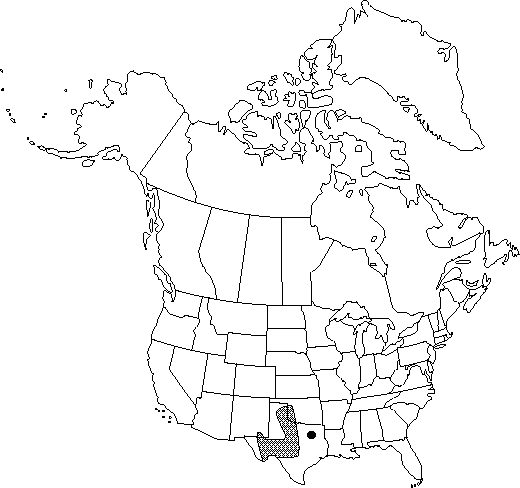Juniperus pinchotii
Forest. Irrig. 10: 204. 1905.
Shrubs or shrubby trees dioecious, to 6 m, usually multistemmed; crown flattened-globose to irregular. Bark ashy gray to brown, exfoliating in long strips, that of small branchlets (5–10 mm diam.) smooth, that of larger branchlets exfoliating in strips or sometimes in flakes. Branches spreading to ascending; branchlets erect, 3–4-sided in cross-section, ca. 2/3 as wide as length of scalelike leaves. Leaves yellow-green, abaxial glands elliptic to elongate, many with an evident white crystalline exudate, margins denticulate (at 20×); whip leaves 4–6 mm, not glaucous adaxially; scalelike leaves 1–2 mm, not overlapping or overlapping by not more than 1/5 their length, keeled, apex acute, spreading. Seed-cones maturing in 1 year, of 1 size, with straight peduncles, globose to ovoid, 6–8 (–10) mm, copper to copper-red, not glaucous, fleshy and sweet, not resinous, with 1 (–2) seeds. Seeds 4–5 mm.
Habitat: Gravelly soils on rolling hills and in ravines, limestone, gypsum
Elevation: 300–1000(–1700) m
Distribution

N.Mex., Okla., Tex., Mexico.
Discussion
Pinchot juniper hybridizes with Juniperus coahuilensis (R. P. Adams and J. R. Kistler 1991) but not with J. ashei (R. P. Adams 1977) or J. monosperma (R. P. Adams 1975). The type specimen of J. erythrocarpa is merely an individual with brighter red seed cones.
Selected References
None.